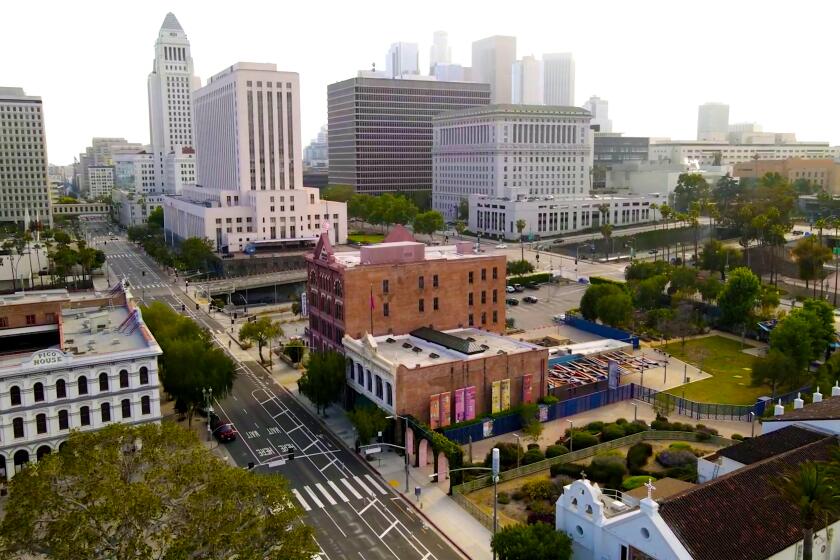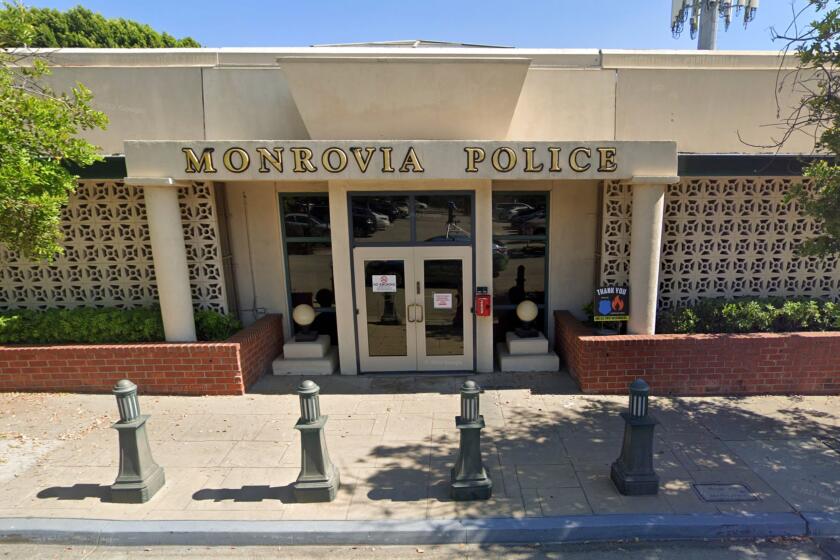Countywide : County Issue Finding New Sources of Water
In the fourth year of drought, options for increasing the water supply include removing salt from seawater, reclaiming waste water and towing icebergs from the Arctic. A
new desalination plant is providing half the water consumed on the Navy’s San Nicholas Island. Are desalination plants a realistic solution to water shortages?
Stephen F. Mack
Water supply development manager for Santa Barbara
It is a very realistic solution for Santa Barbara. Right now we’re going through a water supply alternatives analysis and it looks good to us. It is dependable, you don’t need good weather, plus you have total control over it. You can turn it on and turn it off. We have a contract for an emergency temporary desalination plant and it is going through an environmental review. If it turns out OK, and there is no reason to expect it won’t, the plant, which would provide 5,000 acre-feet per year, will be on line by the spring of 1992. The emergency project is very expensive. It will be paid for in five years. When this is done, it will be the largest desalination plant we’re aware of being used for municipal purposes anywhere. Based on our experience, desalination looks like a viable option for cities that have that option. We are right on the ocean, so getting the water is not a problem. We have to do something to get water, regardless, and all new water supplies are expensive.
Hasan Jafar
Environmental engineer, Pt. Mugu naval installation
As the technology advances to the extent that the costs for semipermeable membranes are brought down, then in my personal opinion desalination could become an option. The
membrane is the heart of the reverse osmosis method. It separates the salt from the pure water. This doesn’t happen naturally. You have to apply pressure, force it through the membrane. It is costly. Maybe in coastal areas where brackish water can be used--it does not contain as much salt solution as seawater--this can be a useful and very viable technology. On a very large scale for cities, I think the costs are going to be fairly high compared to the current costs of producing water. And so what I’m suggesting is that there has to be a compromise. The conservation efforts must continue, and I think at the same time technology should be improved to decrease the cost. And certainly there are situations where there is no other alternative as with San Nicolas Island.
John R. Mundy
Water superintendent for Ventura I think desalination systems do have viability in certain applications. San Nicolas Island doesn’t have a lot of options. They could do without, tank in, or desalt sea water. You not only have the cost of the
facilities but pumping and storage costs. If you take a look at Santa Barbara’s proposal, it is costing $50 million for five years. They don’t have a lot of options on a short-term basis. However, if you’re not in a crunch-type situation, even though in Ventura we’re rationing, we don’t have the same critical need. We do have large ground water basins, and we are able to get a little water out of the Ventura River. In my opinion, our city has a little more time to decide where we want to go. Fifty million dollars spent on desalination is similar to the cost of importing water on a pipeline. I think the money is probably better spent building pipeline facilities than building a temporary desalination system. Personally, I think we want to provide a water supply we can depend on for many years.
Ted Kuepper
Environmental engineer, Naval Civil Engineering Laboratory
I was involved in bringing the desalination plant out to San Nicolas Island. For that particular application it certainly was the most viable alternative, since the other alternative was barging water. The cost is
something like 20% of the cost of barging water. The bottom line is always cost. The quality has to be at a certain level to meet California and EPA standards, but those are not difficult to meet. For Ventura County specifically, I guess I’d have to say if the drought was only in Southern California and not really affecting Northern California, then the prospect of continuing to bring water down is still probably the cheapest way of going. However, if the drought was to continue throughout the state, then bringing water down from up north is not a long-term solution. Desalination would then step into that viable-alternative ranking. One of the key advantages of sea water is that you do have an unlimited source of water once the plant is established.
J. Michael Lyons
Environmental specialist, Los Angeles Regional Water Quality Control Board
As I understand it, desalination is an expensive way of producing water. I think it was practical on San Nicolas Island since the alternative was barging water. To the Navy it was worth it. This may not be
the case for large populations on the mainland. As far as I know, the water is fine. Very pure, because the process removes all the impurities. I don’t know how it actually tastes. I’m not sure if it is practical to produce large quantities of water. It does take energy to operate the plants and it becomes expensive. A lot of brine is produced as a byproduct and the brine has to be disposed of. Basically we put it back in the ocean and wait for it to become diluted. With the small units we have on Catalina and San Nicolas, the volume of brine is small enough that it dissipates very quickly. But if you’re talking about a large-scale unit, there are possibly some environmental consequences.
More to Read
Start your day right
Sign up for Essential California for news, features and recommendations from the L.A. Times and beyond in your inbox six days a week.
You may occasionally receive promotional content from the Los Angeles Times.






